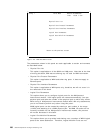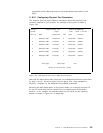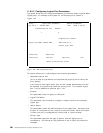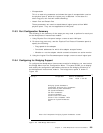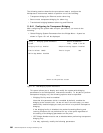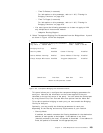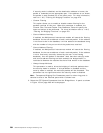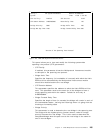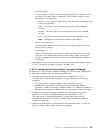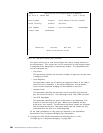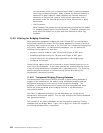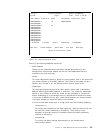If security mode is
disabled
, and the destination address is known, the
packet is forwarded on the appropriate port. If the address is not known,
the packet is sent (flooded) on all the other ports. For more information,
refer to 11.8.5, “Filtering for Bridging Functions” on page 270.
•
Custom Filtering
This option allows you to
enable
or
disable
custom filtering for the
packets received on this port. When this parameter is enabled, the
Custom Filter Test and Custom Filter Statement Table
will specify the
tests and actions to be performed. For more information refer to 11.8.5,
“Filtering for Bridging Functions” on page 270.
•
Source Address Learning
If
enabled
, the Multiprotocol Interconnect module will search the filtering
database for the source address of each received packet. If the address
in not found to be in the database, it will be added to the database along
with the number of the port on which the packet was received.
•
Source Address Filtering
If
enabled
, the Multiprotocol Interconnect module will search the filtering
database for the source address of each received packet. If the address
in not a fixed entry (manually entered by the user in the filtering
database), then the packet is discarded. Note that when security mode
and source address filtering are both enabled, the bridged traffic is
restricted to between the stations that have fixed entries in the database.
•
Always Accept Multicast
This parameter is used to allow the bridging of multicast packets when
the security mode is enabled. If this parameter is disabled and the
security mode is enabled, the multicast packets will be discarded. This
parameter has no significance when the security mode is disabled.
Note:
Transparent Bridging Port Parameters
panel for token-ring ports is
identical to that of the Ethernet ports which is shown here.
3. Select the
STP System Parameters
from the
Bridge Menu
. A panel as shown
in Figure 153 on page 265 will be displayed.
264 8260 Multiprotocol Intelligent Switching Hub



